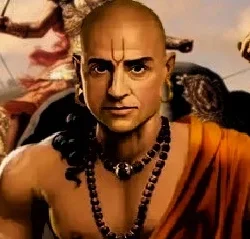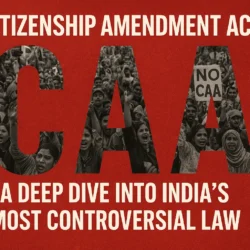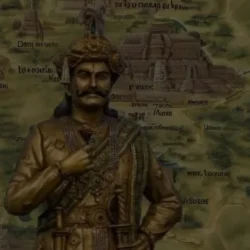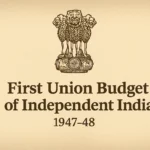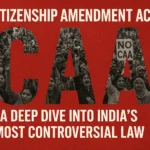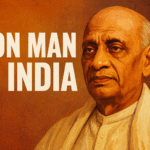📌Disclaimer
This article provides a comprehensive historical overview of the Indian National Congress, based on documented accounts and archival narratives. It aims to inform readers about key political developments and transformations within the party across different eras.
Introduction
The Indian National Congress (INC), founded in 1885, has shaped India’s political evolution. It led the nation’s independence struggle and governed for over six decades post-1947. Once a symbol of freedom, Congress now faces criticism and decline.
Tracing Congress’s history covers its role in the independence movement as well as its internal struggles, ideological shifts, and ongoing controversies influencing Indian politics.
Origins of the Indian National Congress (1885–1905)
The Indian National Congress was founded on 28 December 1885 by Allan Octavian Hume, a retired British civil servant. The idea of a national political organization in India arose after the Rebellion of 1857, when the British Parliament passed the Government of India Act of 1858, transferring administrative power from the East India Company to the British Crown.
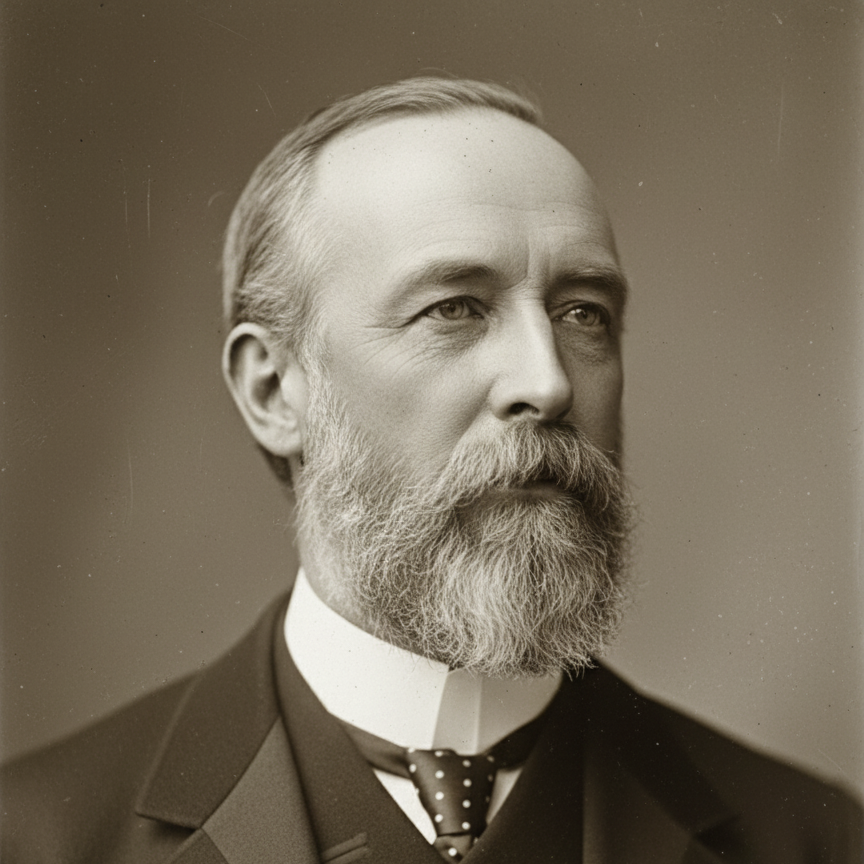
India lacked a unified national political platform at this time. Regional groups like the Bengal, Madras, and Bombay Associations, and Poona Sarvajanik Sabha, merged under Hume’s guidance.
Hume, who had witnessed the 1857 uprising firsthand, believed that India needed representation in governance. He even wrote an open letter in 1883, appealing to educated Indians to unite and demand administrative participation. His proposal received tacit approval from the then Viceroy of India, Lord Dufferin, who considered such a platform useful for understanding Indian public opinion.
The first Congress session was held at Tejpal Sanskrit College, Bombay, presided over by W.C. Banerjee, with 72 delegates in attendance. Initially, the Congress represented the elite, English-educated Indian class, mostly lawyers and professionals. Its early goal was not independence but influencing British policies for India’s welfare.
By the 11th session, Congress had grown to 1,600 delegates, and it began criticizing British policies, especially after the famine of 1896. However, many leaders like Lala Lajpat Rai felt that the moderate approach of petitions and appeals was ineffective. The divide between moderates and extremists was beginning to take shape.
The Surat Split and the Rise of Extremists (1906–1915)
By the early 1900s, ideological rifts widened. The partition of Bengal in 1905 by the British government deepened resentment. Two camps emerged within Congress — the Moderates, led by Gopal Krishna Gokhale and Surendranath Banerjee, and the Extremists, led by Bal Gangadhar Tilak, Lala Lajpat Rai, and Bipin Chandra Pal.
Moderates preferred dialogue and petitions, while extremists believed in boycott and mass agitation.
In the 1906 Calcutta session, presided over by Dadabhai Naoroji, the Congress passed a historic resolution demanding Swaraj (self-rule), national education, and boycott of foreign goods — the first explicit call for self-governance.
However, tensions peaked at the 1907 Surat session. Originally planned in Nagpur, the meeting was shifted to Surat, a moderate stronghold, to curb extremist influence. When Tilak tried to speak without permission, chaos erupted. Chairs and shoes flew across the hall; police intervened, and the session was canceled. This infamous Surat Split divided the Congress into two rival factions — the Moderates and the Extremists.
Lala Lajpat Rai later reconciled the two sides, warning that a permanent split would only help the British suppress nationalist forces.
By 1915, both groups reunited, just as Mahatma Gandhi returned from South Africa, marking a new phase of Congress history.
Gandhi’s Entry and Mass Mobilization (1915–1930)
After meeting Gopal Krishna Gokhale, Gandhi toured India to understand its people and problems. His grassroots campaigns — the Champaran Satyagraha, Ahmedabad Mill Strike, and Kheda Satyagraha — made him a national leader.
In 1916, the Lucknow Pact was signed between Congress and the Muslim League, thanks to Muhammad Ali Jinnah, a member of both organizations. This agreement promised Hindu-Muslim unity and joint pressure on the British.
By 1919, the Congress gained new momentum under leaders like Motilal Nehru and Jawaharlal Nehru, especially after the Jallianwala Bagh Massacre. The Non-Cooperation Movement soon followed, transforming Congress from an elite group into a mass-based national movement.
New figures like Sardar Vallabhbhai Patel and Subhas Chandra Bose emerged, while Congress expanded its organizational structure by creating the All India Congress Committee and a 15-member Working Committee.
By 1930, Congress formally declared Swaraj (complete self-rule) as its goal. Gandhi’s Dandi March and Civil Disobedience Movement became global symbols of India’s freedom struggle.
From the Quit India Movement to Independence (1930–1947)
Congress’s influence soared during the 1937 provincial elections, winning 758 out of 1,500 seats and forming governments in eight provinces. The party had become the representative of Indian aspirations.
When World War II began, the British sought Congress’s support, but Gandhi refused unless independence was promised. This led to the Quit India Movement (1942), calling for “Do or Die.” Congress leaders resigned from provincial posts, and the British jailed many, including Gandhi, Nehru, and Patel.
Meanwhile, Subhas Chandra Bose, disillusioned by Congress’s non-violent approach, resigned and founded the Indian National Army (INA) to fight alongside Axis powers for India’s liberation.
By the 1945–46 elections, Congress again dominated, while the Muslim League led by Jinnah swept Muslim-majority provinces like Punjab and Bengal. With the demand for Pakistan rising, the Interim Government of 1946 was formed, headed by Jawaharlal Nehru, with Sardar Patel as Home Minister and Abul Kalam Azad as Congress President.
When Gandhiji intervened to ensure Nehru became the Interim Prime Minister over Patel, it created lasting debates. India finally gained independence in 1947, but at the cost of Partition and the birth of Pakistan.
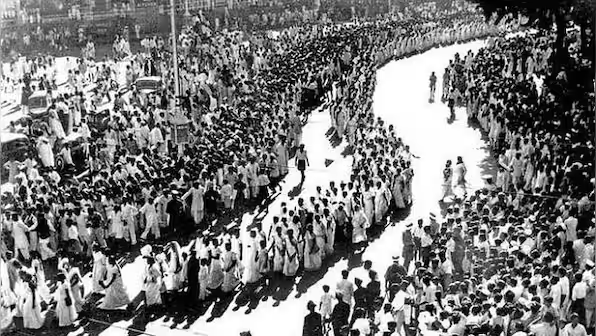
Image Source: Firstpost
Congress in Power: The Nehru Era (1947–1964)
After independence, Mahatma Gandhi wished that Congress disband itself and become a public service organization. However, the party continued as India’s ruling power.
In the 1951 general elections, Congress under Jawaharlal Nehru won 364 out of 489 seats, forming India’s first democratic government. Nehru became the first Prime Minister of India, leading the nation toward industrialization, secularism, and democracy.
Nehru’s policies were inspired by Soviet socialism, emphasizing state control over heavy industries and a planned economy. While this approach built infrastructure, it also gave rise to the “High Command culture” within the Congress, where decision-making became centralized.
Despite criticism, Congress achieved landslide victories in 1957 and 1962, though the Sino-Indian War of 1962 tarnished Nehru’s image. To rejuvenate the party, K. Kamaraj introduced the Kamaraj Plan, urging senior ministers to resign and strengthen the organization at the grassroots.
After Nehru’s death in 1964, Lal Bahadur Shastri became Prime Minister, thanks to Kamaraj’s support.
The Shastri Years and Indira Gandhi’s Emergence (1964–1969)
Lal Bahadur Shastri, remembered for his slogan “Jai Jawan, Jai Kisan,” led India through the 1965 war with Pakistan but died unexpectedly in Tashkent (1966).
A leadership contest followed between Morarji Desai and Indira Gandhi, Nehru’s daughter. With Kamaraj’s backing, Indira Gandhi won and became India’s first woman Prime Minister in 1966.

Image Source: Revisitingindia
In the 1967 elections, Congress suffered significant losses, retaining power at the center but losing in eight states, signaling the end of one-party dominance.
Internal divisions grew — the Syndicate of old leaders (like Kamaraj and Sanjiva Reddy) opposed Indira Gandhi’s socialist tilt. Her decision to nationalize 14 banks and challenge party elders led to a split in 1969, dividing Congress into Congress (O) and Congress (R).
Indira’s faction gained popular support, forming alliances with smaller parties and consolidating her image as a strong, independent leader.
Indira Gandhi’s Rule, Emergency, and Political Dominance (1969–1984)
Indira Gandhi’s slogan “Garibi Hatao” (Eradicate Poverty) and her victory in the 1971 war leading to Bangladesh’s creation made her a national icon. In the 1971 elections, her Congress (R) won 352 out of 521 seats, while Congress (O) managed only 16.
However, in 1975, the Allahabad High Court annulled her election on charges of electoral malpractice. Instead of resigning, she declared a national Emergency (1975–1977), suspending civil liberties, censoring the press, and jailing opposition leaders.
The Emergency also saw forced sterilizations under Sanjay Gandhi’s population control campaign. Over 6 million men were sterilized in a year, with reports of coercion and deaths.
By 1977, rising unrest led to fresh elections. The Janata Party, led by Morarji Desai, defeated Congress, forming India’s first non-Congress government.
Yet, in 1980, Indira Gandhi returned to power with a massive majority under Congress (I). Her leadership was reaffirmed, but her assassination in 1984 ended an era.
Rajiv Gandhi and the Age of Modernization (1984–1991)
After Indira Gandhi’s death, Rajiv Gandhi became Prime Minister. His Congress secured 404 seats, the largest mandate in history. Rajiv envisioned a modern India through technological and electronic revolutions, promoting computerization and telecom growth.
However, controversies such as the Bofors scandal, the Shah Bano case, and the Bhopal Gas Tragedy tarnished his image.
In 1989, Congress lost power, but after Rajiv Gandhi’s assassination in 1991, PV Narasimha Rao formed a minority government, marking the start of India’s economic liberalization.
Congress After Rajiv: Narasimha Rao to Sonia Gandhi (1991–2004)
During Narasimha Rao’s tenure (1991–1996), India opened its economy, but the Babri Masjid demolition (1992) and corruption scandals weakened his government. Tensions reportedly grew between Sonia Gandhi and Rao, particularly over the handling of the Bofors case.
After Congress’s 1996 defeat, Sitaram Kesri became party president but soon faced rebellion for withdrawing support from coalition governments. Amid internal chaos, Sonia Gandhi entered politics in 1998, replacing Kesri as Congress President after a dramatic leadership struggle.
Although Congress lost the 1998 elections, Sonia Gandhi’s charisma revived party unity, and by 2004, she successfully led the formation of the United Progressive Alliance (UPA).
The UPA Era and the Gandhi Family’s Continued Influence (2004–2014)
Under Sonia Gandhi’s leadership, the UPA won in 2004 and again in 2009, with Dr. Manmohan Singh as Prime Minister. Congress governed 15 states at its peak.
However, a “High Command” culture reemerged, centralizing power within the Gandhi family. Corruption scandals like 2G Spectrum, Commonwealth Games, and AgustaWestland weakened public trust.
Movements like Anna Hazare’s anti-corruption protests and the rise of Narendra Modi shifted national sentiment, leading to Congress’s historic defeat in 2014.
Congress in Crisis: Rahul Gandhi and the Struggle for Relevance (2014–Present)
After 2014, Rahul Gandhi emerged as the face of Congress, though formally elected party president only in 2017. Despite partial state-level successes (Rajasthan, MP, Chhattisgarh), the 2019 general elections saw another heavy defeat.
Internal dissent grew as senior leaders like Scindia, Milind Deora, and Ghulam Nabi Azad left the party. Others, including Shashi Tharoor, criticized the lack of organizational renewal.
In 2022, Mallikarjun Kharge, a Gandhi loyalist, became Congress president, while Rahul launched the Bharat Jodo Yatra to reconnect with the masses. Congress has since regained ground in Karnataka and Telangana, but national revival remains uncertain.
Today, critics argue that the Congress must reinvent itself structurally and ideologically, moving beyond dynastic politics to rebuild credibility and connect with India’s evolving electorate.
Conclusion: The Legacy and the Uncertain Future
The Indian National Congress is both a symbol of India’s freedom struggle and a mirror of its political evolution. From the vision of A.O. Hume to the leadership of Mahatma Gandhi, Nehru, Indira, and Rajiv, Congress shaped India’s destiny.
Yet, decades of internal divisions, centralized control, and disconnect from the masses have brought the party to a crossroads. Whether it can reclaim its national relevance depends on its ability to modernize, decentralize, and reconnect with India’s people.
The Congress story is far from over — it remains one of India’s most powerful political legacies, intertwined with the nation’s own journey from colonial subjugation to democratic transformation.





